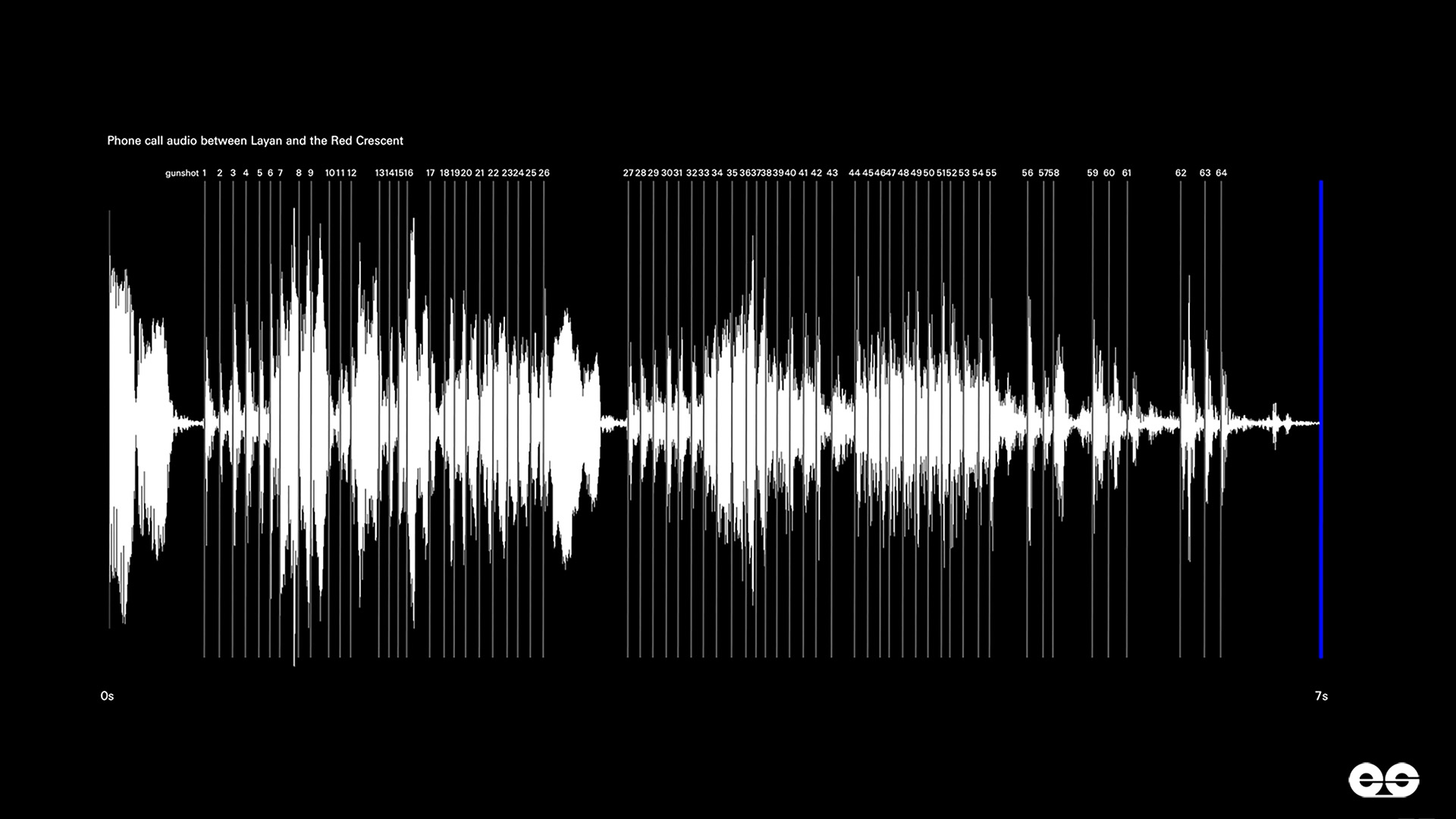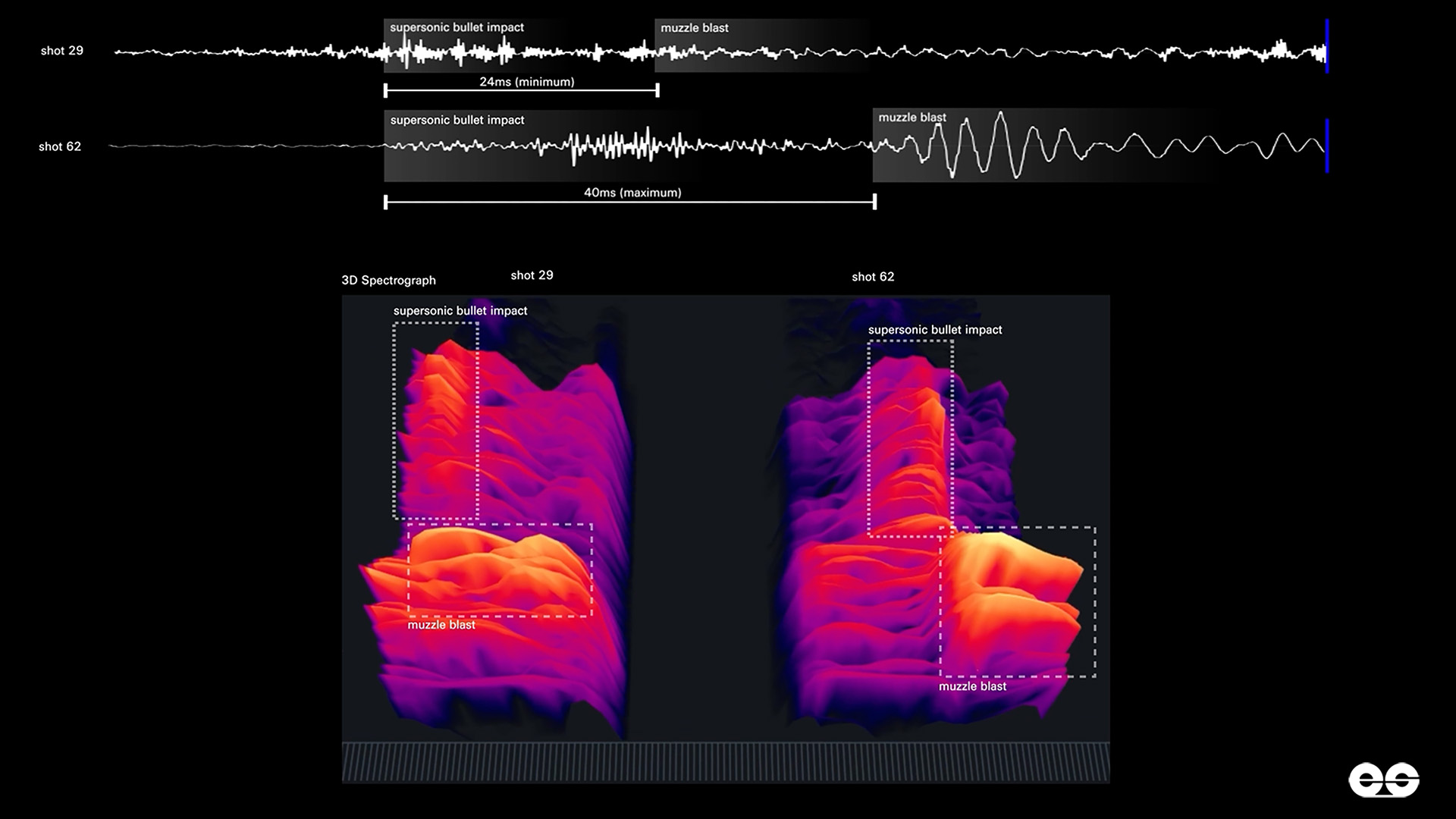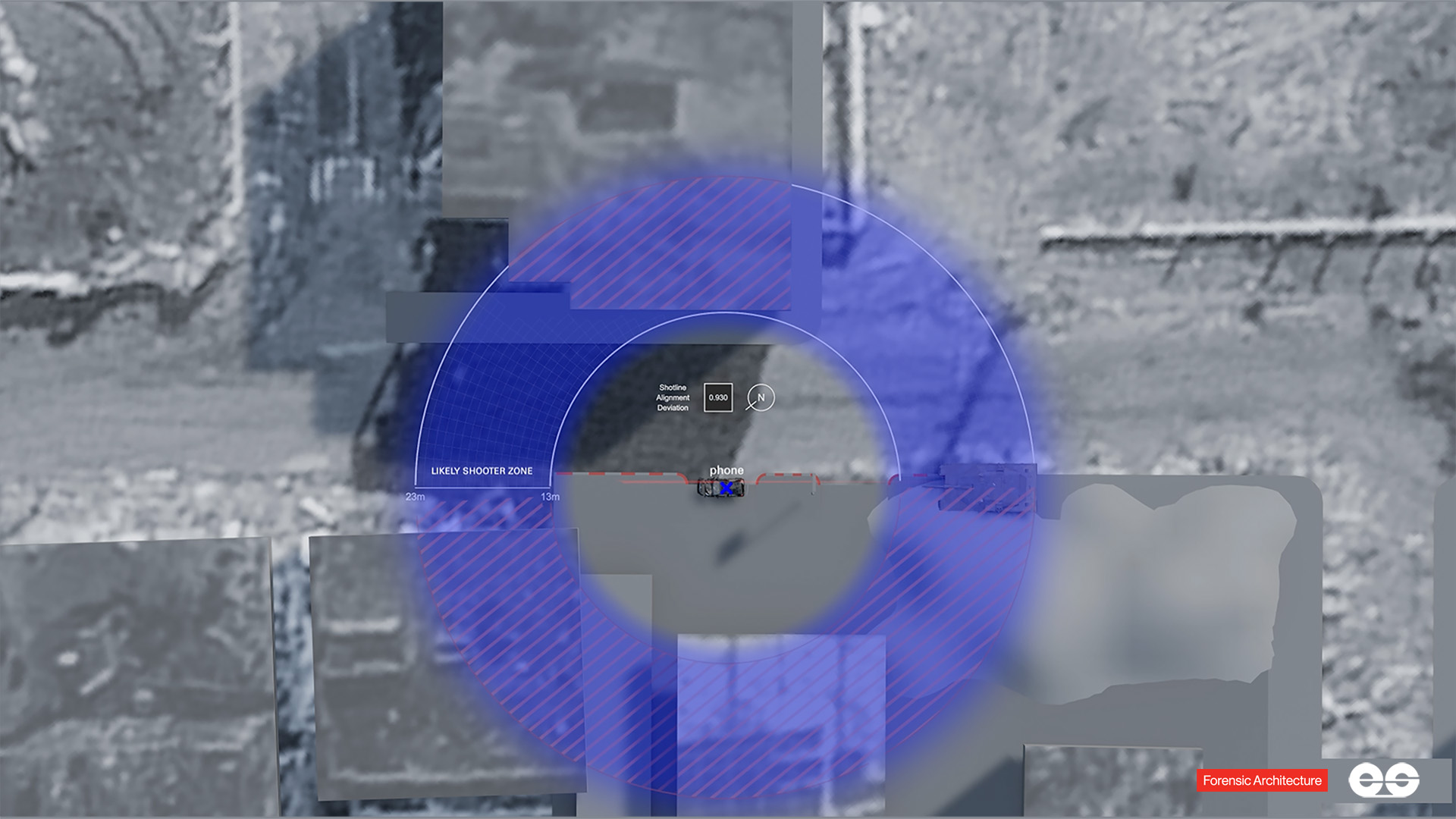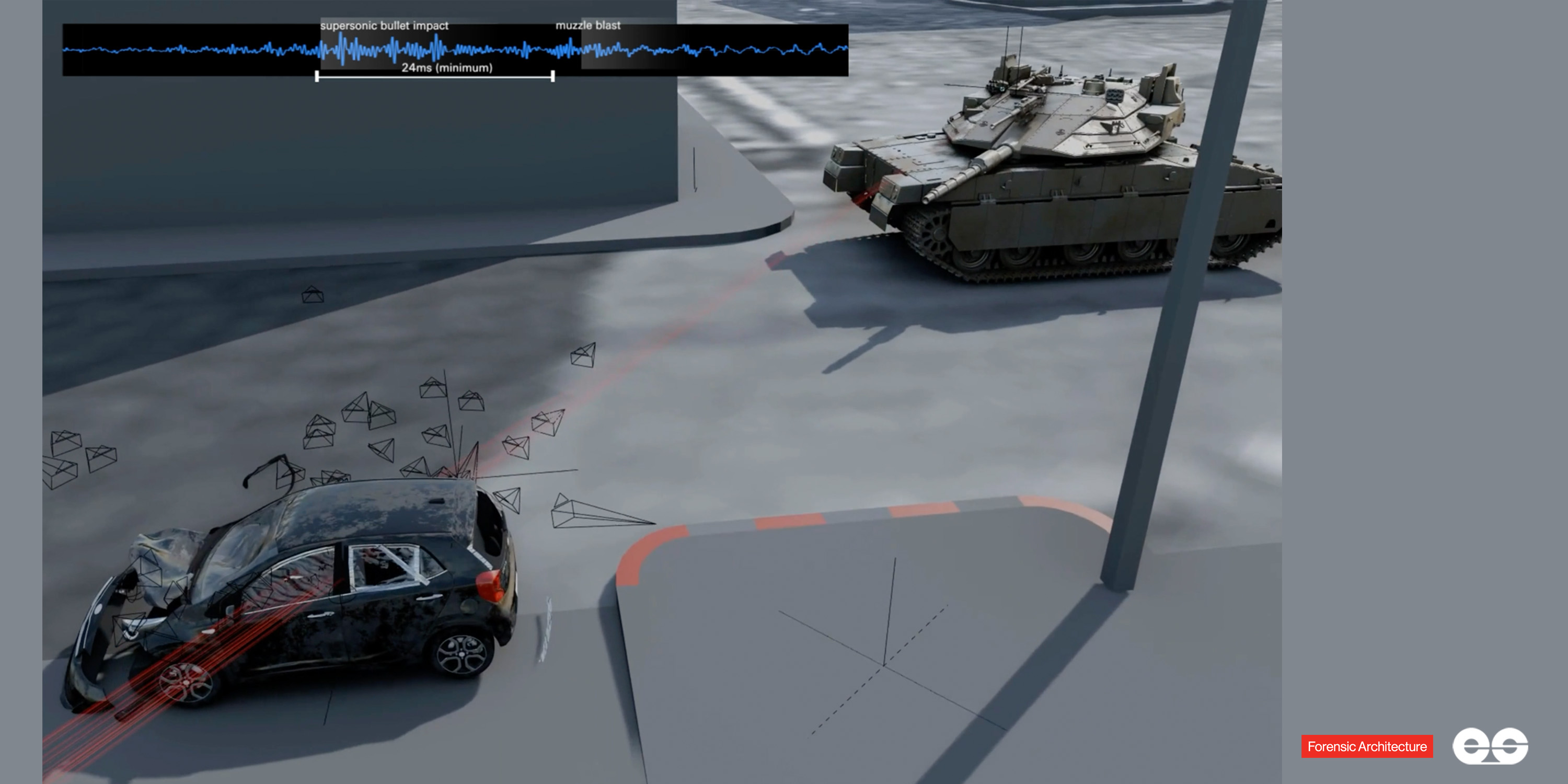The killing of Layan Hamada and Hind Rajab
On 29 January 2024, a six-year-old Palestinian child in Gaza City, Hind Rajab, pleaded over the phone for emergency workers to rescue her from a car riddled with bullets. Her body was found two weeks later, on 10 February, alongside the bodies of six of her family members in the car they drove to flee their neighbourhood as Israeli forces invaded. The bodies of two Palestine Red Crescent Society (PRCS) paramedics, missing since the evening of the call when they were dispatched to rescue Hind Rajab, were discovered in their ambulance about 50 metres away. Earshot worked with Forensic Architecture to investigate the circumstances of her murder for a report by Al Jazeera's Fault Lines.
During the course of its investigation, Earshot spent hours analysing the phone conversations between Hind Rajab and the emergency workers. However, the focus of the investigation was on the six seconds of audio in which Layan Hamada, Hind's cousin aged 15, was shot dead. Earshot's analysis below shows that it is highly likely that Layan Hamada was shot by the Israeli Army at close range (13-23 metres away).
Audio ballistic analysis:
In the final moments that we hear Layan Hamada’s voice, a total of 64 gunshots can be heard, fired in just 6 seconds. The gun firing these shots is firing at a range of 750 to 900 rounds per minute. This is in excess of what an AK-type rifle, the assault rifle most commonly attributed to Hamas, is capable of firing. This range of rounds per minute is consistent with Israeli Army issued weaponry such as the M4 assault rifle or the FN MAG machine gun on a Merkava tank.
64 gunshots:
When a recording device is in the line of fire, the two distinct sounds that constitute gunfire are typically audible. First, the sound of the bullet traveling at supersonic speed. Second, the blast from the muzzle of the gun reaching the recording device at the slower speed of sound. While the bullet sounds akin to a whip cracking, the muzzle blast is a low end thud. Investigators at Earshot distinguised these two sounds in the recording and used the interval between them to determine the distance between the shooter and the recording device.
Audio ballistic analysis for the killing of Layan Hamada (Part 1)

The distance between the shooter and the victim:
Due to the condition of the recording, the noise of the screams and the rapid succession of bullets impacting the vehicle, it was only possible to distinguish the supersonic sound of the bullet from the muzzle blast for 12 of the 64 shots. The time between bullet impact and muzzle blast ranges from a minimum of 24 milliseconds (shot 29) to a maximum of 40 milliseconds (shot 62).
Audio ballistic analysis for the killing of Layan Hamada (Part 2)

The spectrographic image shown in the video above reveals the intensity of the frequencies over time for these two gunshots. The X-axis is time, the Y-axis is the frequency range from low to high, and the brightness is the intensity. In the three-dimensional spectrograph of the two gunshots, it becomes even clearer to distinguish between the sound peaking in the mid-to-high range frequencies for the supersonic bullet and then the lower frequencies for the muzzle blast.
Gunshot simulation and derived shooter distance:
Audio ballistic analysis for the killing of Layan Hamada (Part 3)

Seconds before Layan Hamada is killed, she is heard saying “They are firing at us, the tank is next to me”. The Merkava tank FN MAG machine gun fires 7.62 calibre bullets. These bullets travel at a speed of 840 metres per second. The muzzle blast from the gun that fired these shots was traveling at 340.2 metres per second, which is the speed of sound at the time of the killing at a temperature of 15 degrees Celsius.
Earshot found that with the minimum registered interval of 24 milliseconds, this tank would have to be positioned just 13 metres away from the car. With the maximum interval of 40 milliseconds, the tank would have been only 23 metres away from the car. This analysis suggests that the tank had to be positioned within close range (13-23 metres) of the car with it fired the shots that killed Layan Hamada. At such proximity, it is not plausible that the shooter could not have seen that the car was occupied by civilians, including children.
Earshot’s audio ballistic analysis supports the final words of Layan Hamada; the gunfire came from a tank that was next to them.

Though the sound alone cannot tell us the exact location of the shooter, Forensic Architecture supplemented Earshot’s findings with a detailed analysis of the bullets entry and exit holes found in the car in which they were killed. This analysis shows the most likely position of the tank. The full report can be found here.